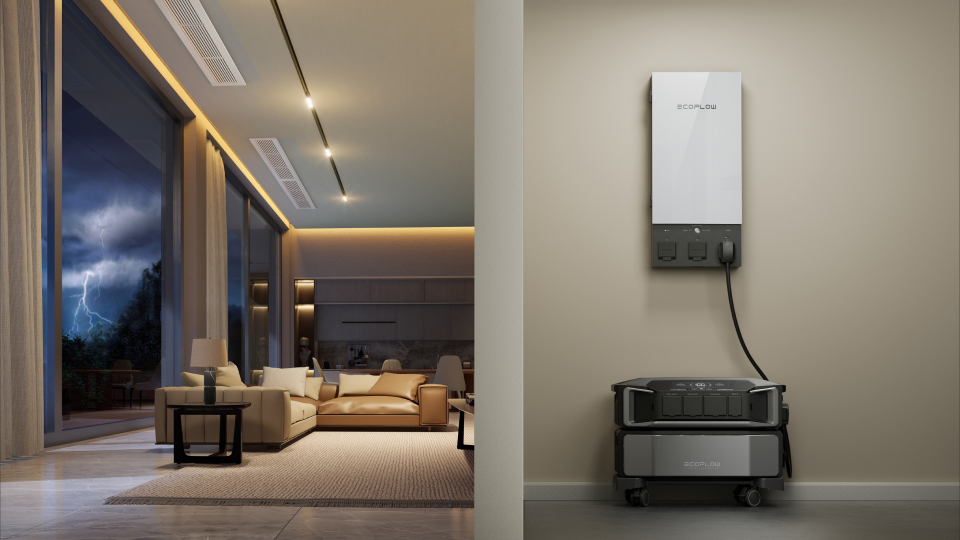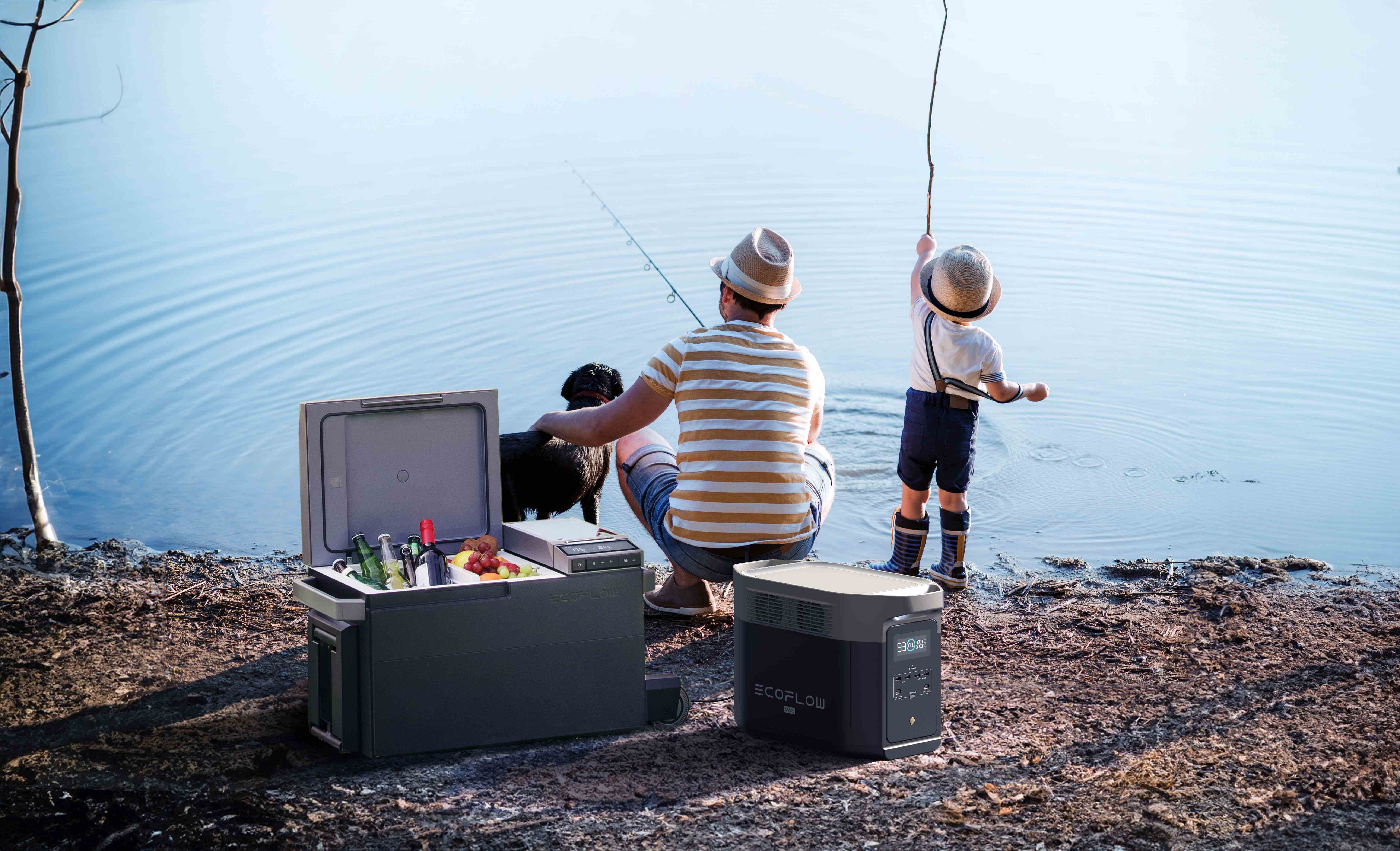Layer 1: Fortifying Your Home's Outer Shell Against Wind Damage
- Layer 1: Fortifying Your Home's Outer Shell Against Wind Damage
- Layer 2: Defending Your Home Against Flood Waters
- Layer 3: Preparing Your Interior and Survival Kit
- Layer 4: Establishing Your Power Lifeline
- The Modern Solution: A Hurricane-Proof Home Power Backup
- Conclusion: From Preparation to Peace of Mind
For millions of Americans living along the coast, late summer brings a familiar sense of vigilance. You watch the tropics, tracking the formation of storms that could, in a matter of days, become a serious threat to your home and family. A hurricane is a two-front war: against the destructive, tearing force of the wind and the invasive, damaging threat of water. Winning this war is possible, but victory is decided by the preparations you make long before the storm ever makes landfall.
This guide is your comprehensive battle plan. We will walk you through the four critical layers of defense to fortify your home, protect your family, and ensure you have the power you need to weather the storm and its aftermath with confidence.
Layer 1: Fortifying Your Home's Outer Shell Against Wind Damage
A hurricane’s wind doesn't just knock things over; it’s a relentless force looking for a single weak point. Once it gets in, it can tear a house apart from the inside out. Your first and most important line of defense is to make your home’s outer shell as strong as possible.
Is Your Roof Your Weakest Link?
The roof is the most vulnerable part of any home during a hurricane. High winds don't just blow across it; they create a powerful aerodynamic "uplift" force, similar to an airplane wing, that tries to rip the roof off.
- Inspect and Repair: At the start of every hurricane season, inspect your roof for loose or damaged shingles and have them repaired immediately.
- Strengthen Connections: For superior protection, consider having a professional install hurricane straps or clips. These metal connectors anchor your roof trusses to the walls of your home, creating a "continuous load path" that helps resist uplift forces.
- Seal the Decking: A major source of water damage is wind-driven rain being forced through the small seams between the plywood sheets of your roof decking. You can significantly reduce this risk by applying a special flashing tape over these seams.
How Will You Armor Your Windows and Doors?
Many people think the danger of a broken window is just rain getting in. The reality is far worse. If a single window shatters, the full force of the hurricane wind rushes inside, causing a dramatic increase in internal pressure. This pressure can blow out other windows and doors and, in a worst-case scenario, push the roof up off the walls, leading to a catastrophic structural collapse.
- Choose Your Armor: Permanent, professionally installed hurricane shutters (like accordion or roll-down styles) are the most convenient and effective option. A more budget-friendly but labor-intensive choice is to buy pre-cut plywood panels (at least 5/8-inch thick) and the hardware needed to secure them over your windows.
- Don't Forget Doors: Your entry doors should have at least three hinges and a deadbolt with a one-inch throw. It's also critical to brace the door leading from your garage into your home.


Could Your Garage Door Cause a Collapse?
Large, double-wide garage doors are often one of the weakest points of a home. They are lightweight relative to their size and can easily buckle under hurricane-force winds. If the garage door fails, your home will be instantly pressurized. You can prevent this by purchasing and installing a vertical garage door bracing kit from a local home improvement store.
What in Your Yard Could Become a Missile?
Anything left unsecured in your yard can be picked up by 100+ mph winds and turned into a dangerous projectile. Days before the storm, perform a clean sweep:
- Trim any dead or overhanging branches from trees.
- Bring all patio furniture, grills, planters, garbage cans, and children's toys inside your garage or home.
Layer 2: Defending Your Home Against Flood Waters
Once you've braced for the wind, you must prepare for the water—both from torrential rain and potential coastal storm surge.
Do You Know Your Flood Zone?
Your first step is to understand your specific risk. Visit FEMA's Flood Map Service Center online to see if you live in a storm surge evacuation zone. This knowledge will dictate your most important decision: whether to shelter in place or evacuate.
How Can You Stop Water From Getting In?
- Gutters and Drains: Check and clear all gutters and downspouts to ensure rainwater can flow freely away from your house.
- Foundation Sealing: Inspect your home's foundation for any cracks and fill them with waterproof sealant.
- Flood Vents: If you live in a high-risk flood zone, consider having a professional install flood vents in your foundation. These smart devices allow floodwater to flow through the crawlspace or garage instead of building up immense pressure that could collapse the walls.
- Sump Pump Check: Ensure your sump pump is working correctly. A reliable backup power source is critical, as the pump will be needed most when the power is out.
Layer 3: Preparing Your Interior and Survival Kit
If you are not in an evacuation zone and choose to shelter in place, your interior preparations are what will keep your family safe and comfortable for several days.
What Goes in a Coastal Home Disaster Preparedness Kit?
This goes beyond the basics. While you need the standard items—water (one gallon per person, per day for several days), a 7-day supply of non-perishable food, and a first-aid kit—a coastal kit needs more.
- Waterproofing: Extra waterproof bags, plastic sheeting, and duct tape.
- Communication: A battery-powered or hand-crank radio (NOAA Weather Radio is best), flashlights, and extra batteries.
- Documents & Cash: Copies of all insurance policies, birth certificates, and other critical documents in a waterproof, portable safe. Have a supply of cash in small bills.
- Safety Tools: A manual can opener, a multi-tool, and a battery-operated carbon monoxide detector to ensure air quality safety post-storm.
Where is Your Designated Safe Room?
Choose a room in your home that is on the first floor (unless you are in a storm surge zone), in the center of the house, and has no windows. An interior hallway, bathroom, or closet is an ideal choice.
Layer 4: Establishing Your Power Lifeline
The storm will eventually pass, but the power outage will remain, potentially for days or even weeks. A reliable source of emergency power for your home is not a luxury; it is the absolute key to a safe and speedy recovery.
Why is an Emergency Power Supply Non-Negotiable?
Power is what enables all other recovery efforts. It runs the sump pump to remove floodwater. It keeps your refrigerator cold, saving hundreds of dollars in food and protecting vital medications. It charges your phone so you can contact family, file insurance claims, and receive official updates. In the sweltering, humid post-hurricane heat, it can run fans or a small A/C unit, providing critical relief.


Are Gas Generators the Best Choice in a Hurricane?
The traditional emergency power generator for home runs on gas, and it comes with significant risks in a hurricane scenario. The danger of carbon monoxide (CO) poisoning is immense; they can never be run indoors, in a garage, or even near a window. Refueling in the middle of a dark, wet, and dangerous environment is a major challenge.
The Modern Solution: A Hurricane-Proof Home Power Backup
The safest and most reliable way to prepare home power for hurricane season is with a modern portable power station or whole-home battery backup. This battery backup for power outage is silent, produces no fumes, and is completely safe to use indoors.
The ultimate solution for a severe threat like a hurricane is the EcoFlow DELTA PRO Series. It’s engineered to be a true emergency power supply for homes.
- Massive Power: It has a huge 3600W output, allowing it to run multiple heavy-duty appliances at once—including a full-sized refrigerator, sump pump, and even a central air conditioner.
- Multi-Day Capacity: Its large 3.6kWh capacity can be expanded with extra batteries, giving you enough power to last for days on end.
- Endless Energy with Solar: Crucially, the DELTA Pro can be recharged with solar panels. After the storm passes, you can harness the power of the sun to provide virtually unlimited energy, keeping you independent even if the grid is down for weeks.
Conclusion: From Preparation to Peace of Mind
Preparing your coastal home for a hurricane is about creating layers of defense. It's a systematic process of fortifying your home's shell against wind, managing the threat of water, preparing your interior for survival, and, most critically, establishing a reliable power lifeline. By taking these steps, you can face any storm season not with fear, but with the confidence and peace of mind that comes from being truly prepared.
Don't let a power outage dictate your recovery. Explore the EcoFlow DELTA Pro and build your own hurricane-proof power plan today.